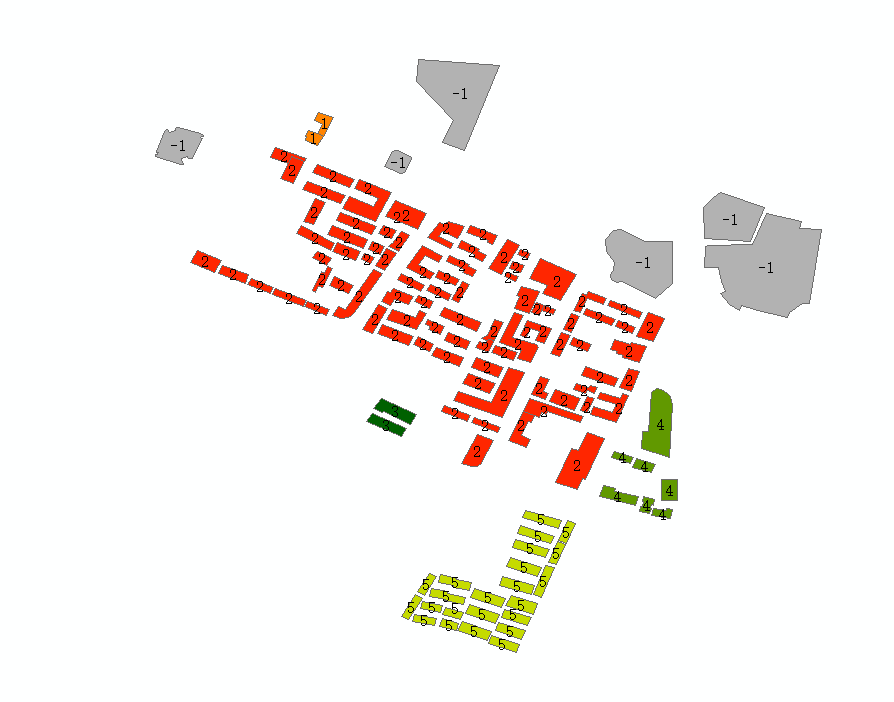多边形自相交处理-selfIntersection
今天测试提了一个自相交空间查询的bug,用自相交的多边形查询资源点查不到结果。但是用postgis是可以查询出来的,看了一下postgis的处理方式,wkt字符串转为geometry之后会调用makeValid方法,如果是一个自相交的多边形POLYGON((0 0, 0 100, 100 100, 100 0, 0 0)),它会转换成一个MULTIPOLYGON(((0 0, 0 100, 100 100, 100 0, 0 0)),((50 50, 50 150, 150 150, 150 50, 50 50))),就是说自相交的polygon被转成multiPolygonbn。但是这个是数据库处理的,后来想想geotools有没有对应的处理方法,网上搜索到一个高人写的方法:http://stackoverflow.com/questions/31473553/is-there-a-way-to-convert-a-self-intersecting-polygon-to-a-multipolygon-in-jts,很好的解决了这个问题。
/**
* Get / create a valid version of the geometry given. If the geometry is a polygon or multi polygon, self intersections /
* inconsistencies are fixed. Otherwise the geometry is returned.
*
* @param geom
* @return a geometry
*/
public static Geometry validate(Geometry geom){
if(geom instanceof Polygon){
if(geom.isValid()){
geom.normalize(); // validate does not pick up rings in the wrong order - this will fix that
return geom; // If the polygon is valid just return it
}
Polygonizer polygonizer = new Polygonizer();
addPolygon((Polygon)geom, polygonizer);
return toPolygonGeometry(polygonizer.getPolygons(), geom.getFactory());
}else if(geom instanceof MultiPolygon){
if(geom.isValid()){
geom.normalize(); // validate does not pick up rings in the wrong order - this will fix that
return geom; // If the multipolygon is valid just return it
}
Polygonizer polygonizer = new Polygonizer();
for(int n = geom.getNumGeometries(); n-- > 0;){
addPolygon((Polygon)geom.getGeometryN(n), polygonizer);
}
return toPolygonGeometry(polygonizer.getPolygons(), geom.getFactory());
}else{
return geom; // In my case, I only care about polygon / multipolygon geometries
}
}
/**
* Add all line strings from the polygon given to the polygonizer given
*
* @param polygon polygon from which to extract line strings
* @param polygonizer polygonizer
*/
static void addPolygon(Polygon polygon, Polygonizer polygonizer){
addLineString(polygon.getExteriorRing(), polygonizer);
for(int n = polygon.getNumInteriorRing(); n-- > 0;){
addLineString(polygon.getInteriorRingN(n), polygonizer);
}
}
/**
* Add the linestring given to the polygonizer
*
* @param linestring line string
* @param polygonizer polygonizer
*/
static void addLineString(LineString lineString, Polygonizer polygonizer){
if(lineString instanceof LinearRing){ // LinearRings are treated differently to line strings : we need a LineString NOT a LinearRing
lineString = lineString.getFactory().createLineString(lineString.getCoordinateSequence());
}
// unioning the linestring with the point makes any self intersections explicit.
Point point = lineString.getFactory().createPoint(lineString.getCoordinateN(0));
Geometry toAdd = lineString.union(point);
//Add result to polygonizer
polygonizer.add(toAdd);
}
/**
* Get a geometry from a collection of polygons.
*
* @param polygons collection
* @param factory factory to generate MultiPolygon if required
* @return null if there were no polygons, the polygon if there was only one, or a MultiPolygon containing all polygons otherwise
*/
static Geometry toPolygonGeometry(Collection<Polygon> polygons, GeometryFactory factory){
switch(polygons.size()){
case 0:
return null; // No valid polygons!
case 1:
return polygons.iterator().next(); // single polygon - no need to wrap
default:
return factory.createMultiPolygon(polygons.toArray(new Polygon[polygons.size()])); // multiple polygons - wrap them
}
}转载自:https://blog.csdn.net/legnedycq/article/details/50849484



